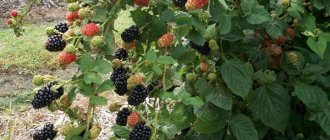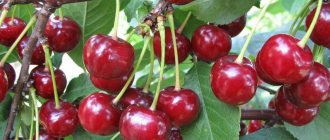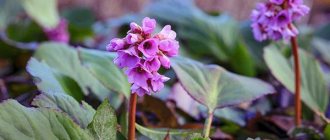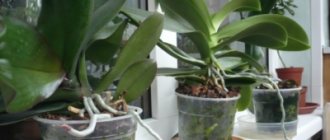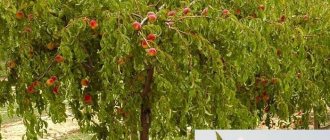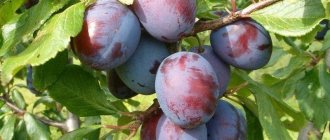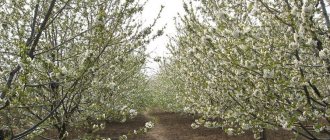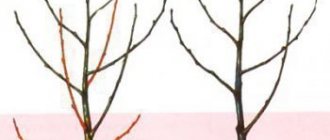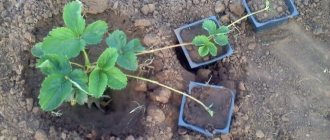Climatic conditions
Cherries would grow excellently in a temperate climate, if not for low winter temperatures and frosts that can destroy the entire crop in a matter of minutes. In all other respects, this climate is quite suitable for fruit crops, including cherries.
Climatic features:
- winter – snowy, moderately frosty;
- summer – warm, moderately humid;
- average winter temperature – from -8 to -12°C (for the southwest and northeast of the region, respectively);
- average summer temperature – from +17 to +21°C (for the north-west and south-east of the region, respectively)
If you plant frost-resistant cherries in such a climate and follow the agricultural techniques for growing this crop, you can get good harvests. The main conditions for successful fruiting are fertilizing, which increases the strength of the tree, and reliable winter shelters.
The most winter-hardy varieties of cherries and their characteristics
Today there are many such varieties; it’s hard to believe that just twenty or thirty years ago the cherry tree seemed to many a pipe dream, a sweet childhood memory of the hot south and a plate full of large, juicy cherries.
On a note! Frost-resistant cherries in Russia were first bred as a result of folk selection in the Leningrad region, so the first frost-resistant varieties of St. Petersburg cherries were called Leningradskaya yellow, Leningradskaya black, and there was also, for example, Zorka.
The surprising thing is that this sweet cherry never became widespread at that time; it could only be found in the collections of enthusiastic gardeners. The problem was that at that time these varieties were used only for private cultivation, and were simply not needed for industrial production.
Today, cherries have become a more popular crop - with growing interest in gardening and an increase in the supply of seedlings on the market, many different imported varieties have begun to be sold. However, most often plants from Moldova that are not zoned for local conditions are brought for sale, and even Ukrainian varieties are not suitable for cultivation in the middle latitudes of Russia. There is no need to talk about regions such as Siberia. Hence the failure to survive and the death of cherry seedlings in summer cottages.
For the first time in the Black Earth region, the most winter-hardy cherries were bred in the conditions of the Rossoshanskaya Experimental Station - these were the Rossoshanskaya Krupnaya and Yulia varieties. However, in order to supply the north and north-west of the country with zoned seedlings, even more frost-resistant cherries were required, having the greatest resistance to the cold of flower buds.
It was the breeding of such qualities that Bryansk breeders began to develop. They developed varieties such as:
- Rechitsa;
- Revna;
- Tyutchevka;
- Odrinka;
- Bryansk pink.
Another popular cold-resistant variety today is Zyubarova cherry. In the Moscow region it is sold by the Yegoryevsky nursery; according to reviews, it is also suitable for colder regions; some believe that this is, if not the most frost-resistant of the cherry varieties, then one of them.
Winter-hardy cherry Zyubarova: description of the variety
The variety is universal and has an average ripening period. The varietal feature is that this cherry has high frost resistance, it is also resistant to drought. Like any other variety, this cherry tree is tall, which forces gardeners to prune the branches, constantly forming the crown.
Fact! The variety is productive; 75 centners can be harvested per hectare during industrial production.
The taste of the fruit is pleasant, dessert-like, and the taste does not change depending on weather conditions. The pulp of the fruit is juicy, dense, the weight of the fruit is up to 10 grams.
Cherry varieties for the Kirov region
Most experts are inclined to believe that the distribution area of this southern crop, even despite the winter hardiness of some varieties, is still limited to the Leningrad region. There is no point in planting it further due to the high risk of freezing. Nevertheless, many believe that under certain conditions and with the right agricultural technology, it is possible to grow full-fledged cherry fruits even in the Non-Black Earth Region, although the ripening of cherries in these zones will not occur before the ripening of cherries.
The Volga-Vyatka region also belongs to the Non-Black Earth Zone, so many gardeners are interested in what varietal choice can be made for this region and, if there are northern cherries, which one is better.
It should be noted that the frost resistance of the tree and flower buds, even in the most prepared varieties and zoned for northern conditions, is still lower than that of ordinary cherries. This tree does not tolerate prolonged frosts well.
At the same time, the advantage of cherries is its ability to resist coccomycosis, which allows it to endure normal winters more successfully than cherries. The fact that cherries retain their leaves for a long time and are well prepared for winter is to its benefit, while cherries, having lost their foliage and entering the period of secondary growth in the fall, on the contrary, can suffer greatly.
What varieties are used for breeding in the northern regions? Sweet cherries for the Kirov region - varieties:
- Ovstuzhenka;
- Revna;
- Raditsa;
- Bryansk pink;
- Gift to Stepanov;
- Bryanochka;
- Here we go.
In addition, you can work with late-ripening varieties Veda, Pink Pearl, Fatezh, Red dense, Michurinskaya late.
Timing and methods of planting a tree
Seedlings are planted in spring or autumn. In the middle zone, preference is given to spring planting. This is due to low winter temperatures. It is easier for a young tree, planted in the spring and strengthened over the summer, to survive the winter.
Best time to land in the middle zone:
- in spring - at the end of April;
- in autumn - from the end of September to the first half of October.
In spring, planting is done before the buds swell. In autumn, the planting date is chosen so that there are 20-28 days left before the first frost.
Attention!
Cherry seedlings can be planted only after a stable temperature has been established at +5°C.
You can plant cherries in the following ways:
- buy a ready-made seedling from a nursery;
- grow cuttings from the mother tree;
- plant shoots;
- graft onto the rootstock.
Most amateur gardeners and summer residents prefer to purchase ready-made seedlings. They are planted in pre-prepared holes - 60x100 cm. The intervals between the holes are 3 m.
Ariadne
Ariadna - early ripening. Parents of the variety: Leningradskaya red x Zolotaya Loshitskaya. The tree is vigorous. The crown is pyramidal, of medium density. The variety is characterized by a sparsely tiered branching pattern. The fruits are medium size, 4-6 g. The color of the berries is dark red. The pulp is red, juicy, gristly, sweet. The taste is excellent, sweet, dessert. Tasting score - 5 points. The stone is medium in size and easily separated from the pulp. The Ariadna variety is characterized by high early fruiting and begins to bear fruit in the 3rd year after planting in the garden. The variety is partially self-fertile. Productivity is high. The winter hardiness of trees of the Ariadne variety is high. Disease resistance is good. The transportability of the fruit is good. A universal variety, the berries are suitable for fresh consumption and canning.
How to choose a seedling
In order for the seedling to take root and develop well, it is important to choose healthy planting material. You need to contact specialized nurseries.
Rules for choosing seedlings:
- Age – no more than two years. Older trees take root less well, they lag behind in development and often get sick.
- The appearance must be impeccable. Broken, rotten or dried roots are unacceptable. There should also be no damage to the bark.
- The grafting site should be clearly visible on the trunk.
- The roots are well developed, healthy, branched.
- It is recommended to select seedlings with a strong central conductor.
- When buying a seedling in a container, you need to pay attention to the color of the leaves - they should be normal green.
Care
To get decent harvests from year to year, you need to take care of your cherry orchard. Sweet cherries need standard care and protection from frost.
Watering
If precipitation falls in normal amounts, the tree is watered three times during the season. Watering norm is 5-6 buckets of water for mature cherries. In dry weather, the frequency of watering is increased. At the same time, waterlogging should not be allowed, since cherry roots easily rot in conditions of high humidity.
After watering, the tree trunk circles are loosened and weeded. To prevent the growth of weeds and retain moisture in the soil, they resort to mulching. The tree trunk circle is sprinkled with peat, humus, straw or other mulch.
Pollination
The need for pollinators depends on the type of variety. Self-sterile varieties definitely need trees for cross-pollination - cherries of different varieties. To lure bees for pollination, the flowering tree is irrigated with a honey-sugar solution.
Feeding
In the first years of life, the tree is not fed. Subsequently, fertilizing is applied every spring. Compost or rotted manure is applied under each tree - 10 kg.
In autumn, mineral fertilizers are applied. They help trees prepare for winter and survive it safely. Autumn feeding is carried out until October.
Species diversity
Cherry varieties can boast of their diversity (gardeners number more than four thousand). The most convenient classification would be by ripening time. They are divided into early, middle and late varieties.
If you just look at a photo of a cherry, it will be difficult to say which variety is better. When choosing, focus on these indicators. It is difficult to describe all varieties, so let’s look at the most popular ones.
Reviews
Galina, 56 years old
“Iput” has been bearing fruit in our garden for several years now. The variety attracted me with the promise of sweet berries and high yields. We waited 3-4 years for the harvest. The first time there were few berries, then they collected 2-3 buckets. Cherries are large, tasty and very beautiful. They should be collected when they become softer. The description says that Iput is an early variety, but in our country it lags behind its early ripening analogues.
Valery, 49 years old
I like fatezh for its excellent taste and high yield. Minus - it is affected by fungi. Particularly vulnerable to moniliosis. Although the description says that he has increased immunity to this disease. The berries are large, pink-yellow, and eating them is a real pleasure. This is the most delicious variety on my site. The main thing is to spray on time. If you are late, the cherry fly will spoil all the fruits.
Thanks to the successful work of breeders, today there are many varieties of cherries for central Russia - large and small, tall and dwarf, yellow and red. This fruit crop does not require any unusual agrotechnical measures. The main thing is to protect the tree from frost, pests and diseases.
Description of Fatezh cherries
The Fatezh cherry variety is perfect for growing in the Moscow region and in the Central region in general. In the North-West it is also quite possible to get a bountiful harvest, since the variety is zoned for changeable climates and has increased frost resistance. In other climatic zones of the Russian Federation, it is not possible to grow Fatezh cherries due to the harsh, long winters.
Cherry trees are quite tall, at least 3 m, the tallest specimens reach 5 m in height. The crown is dense and spreading, has a rounded shape due to the fact that adult branches deviate towards the ground. The bark is brown in color and smooth in texture. Cherry leaves are located quite densely on the shoots. The leaf blades are long and wide, with a jagged edge, not hard, glossy and bright on top, and lighter and more textured on the back side due to the veins.
